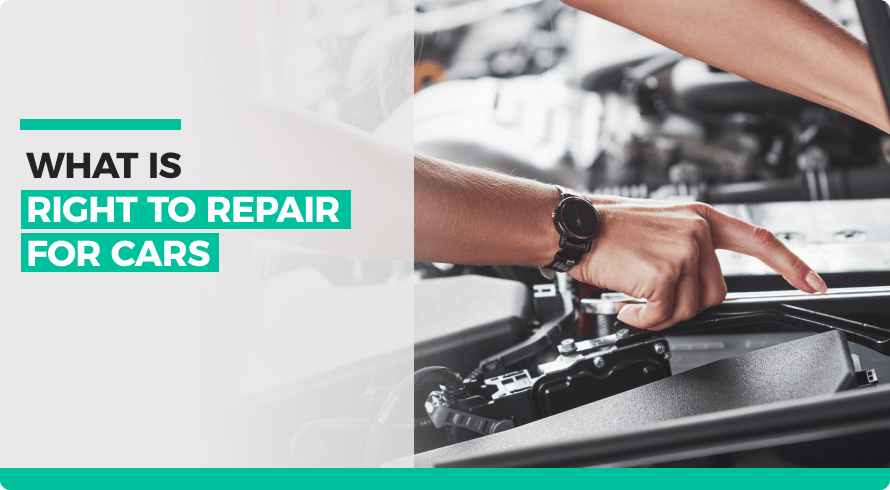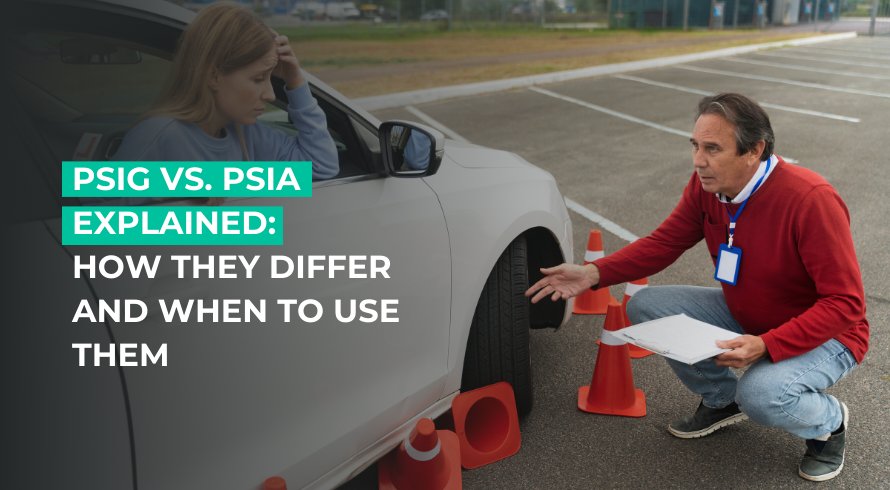Imagine owning a car that you can’t fix on your own when it breaks down. Neither can your trusted mechanic fix it for you. You can only get it running again by taking it to the dealership and paying a hefty sum for repairs.
This is a very likely scenario as more complex cars are being built and manufacturers are lobbying to block access to information, parts and tools needed to service and repair them.
In this blog, we will discuss what is right to repair and why it’s so important for car owners and auto repair shops.
» Want to grow your auto repair business? Click here to schedule a demo.
What is Right to Repair
We are sure you agree that you should be able to repair whatever you own or take it to a technician of your choice. This could be your laptop or the coffee machine in your kitchen. Many consumers want to be able to purchase products that can be upgraded over their lifespan. This is all known as the right to repair.
Automotive right to repair means that you have the right to fix your car in your garage or decide where to have your vehicle serviced and repaired.
Sounds simple, right?
Yet people are often denied the parts, tools or information needed to do this. This is where the right to repair movement comes in. Let’s take a look at it.
Right to Repair movement
Consumers around the world are questioning why they shouldn’t be able to repair products that they own due to the Right to Repair movement. Haven’t you ever wondered why you need to purchase a new product because the price to repair it from the manufacturer authorized service center was too high for your budget?
There has also been significant pushback against ‘planned obsolescence’. This is where manufacturers purposefully limit the life spans of their products. Many products end up in the waste stream when they could be easily fixed.
The idea for this movement originated in the United States and it has been a decades-long struggle for advocates fighting for the rights of consumers to service and repair products that they own.
The objective of the Right to Repair movement is to:
- Grant full access to technical information, including manuals, software updates, support and schematics, to everyone
- Make tools and equipment available to everyone
- Give freedom to all to source and supply replacement parts
- Allow unlocking, adapting, or modifying a device
- Accommodate repair in the design of all products
Right to repair legislation would promote repairability practices throughout industries and make it easier for people to extend the life of the things they buy.
There are a multitude of benefits of this movement for the auto repair industry. Let’s have a look at how the movement benefits car owners and third parties.
» Want information on what you can do to help the Right to Repair movement? Check out this free ebook.
Benefits of Right to Repair
Right to repair legislation is necessary to maintain consumer choice and competitive pricing. It also ensures long term, broad-based economic growth since it helps small businesses. But let’s closely look at the benefits to some of the stakeholders.
For the car owner
The benefit to the car owner is the most obvious. A lot of the new cars in the market aren’t easily repairable. Diagnosis and repair becomes difficult if you don’t have access to complete information on these vehicle systems.
If you do have access, however, you will have the freedom to take your vehicle to a workshop of your choice which offers you a combination of the service and price that caters to your needs. You can avoid having to take your car to the auto manufacturer or a franchised car dealership. We all know how expensive and inconvenient such a trip could be.
For the auto repair shop
Independent repair shops stand to make the most from this movement. Consumers are more likely to take their vehicle to the best, most cost-effective repair shop over a dealership.
Right to repair laws basically level the playing field between workshops, manufacturers and dealerships. Mechanics and repair shops are able to purchase tools, equipment, parts and subscriptions to manuals that guide them through repairs.
Want to learn about technological trends that can help you level the playing field? Check out this blog.
Before the Massachusetts Right to Repair Law, for instance, diagnostic software from car manufacturers was exclusively available to dealerships. Now repair shops have access to it too! We will talk about this law in a bit.
For the parts supplier
The right to repair legislation obliges manufacturers to make spare parts available to car owners and third parties. They can no longer refuse to make them available to anyone but their dealer’s repair shops. Besides auto repair shops, this also means that parts suppliers can easily source and supply replacement parts. Regulation enforces manufacturers to make the aftermarket parts available at reasonable prices to all.
Massachusetts Right to Repair Law
Automotive Right to Repair came into being when Massachusetts voters passed the Motor Vehicle Owner’s Right to Repair law in 2012. This required car manufacturers to provide the necessary documents and information to allow anyone to repair a vehicle. 86% of voters overrode car companies to pass this law.
After two years, though the bill wasn’t passed federally, the auto repair industry agreed to extend the coverage to the entire country. This gave all car owners hope for more affordable repairs across the US.
More than 90% of new cars transmit mechanical data wirelessly. Due to manufacturer lobbying, this wireless telematics data was excluded from that earlier law. Repair shops and right to repair proponents worried that manufacturers would stop sending vital repair information to vehicle diagnostic ports. This would lock car owners into relationships with manufacturer authorized repair shops only.
In 2020, Massachusetts voters broadened this law to also include telematics data. Manufacturers were now required to sell vehicles manufactured in 2022 and later with access to internal wireless data. They will also need to equip the cars ‘with an open access data platform’. With owner authorization, repair shops will be able to retrieve this data from and send commands to the vehicle through a smart phone app.
Right to Repair: where are we now?
The ‘open access data platform’ envisioned by the law doesn’t exist yet, and Alliance for Automotive Innovation has filed suit to prevent the initiative from taking effect. This trade group has almost every large automaker and equipment manufacturer on board along with some self-driving startups.
The dispute is the latest chapter in long-running disagreements between the state and car manufacturers over the right to repair, or car owners’ ability to fix their own cars or choose where to have their vehicle serviced and repaired.
The trade group has argued that opening the car’s telematics data to anyone would be a cybersecurity risk and only the federal government should control who gets access to this data.
The REPAIR Act was introduced in early 2022 in Congress and it makes telematics data a key pillar for auto repair. It has the support of AASA, Auto Care Association, CAR Coalition, and SEMA. There is, however, currently no date for a vote.
Concluding thoughts
AutoLeap is a strong proponent of the Right to Repair movement. After all, it is our mission to help auto repair shops across North America transform and grow.


 Demo
Demo







